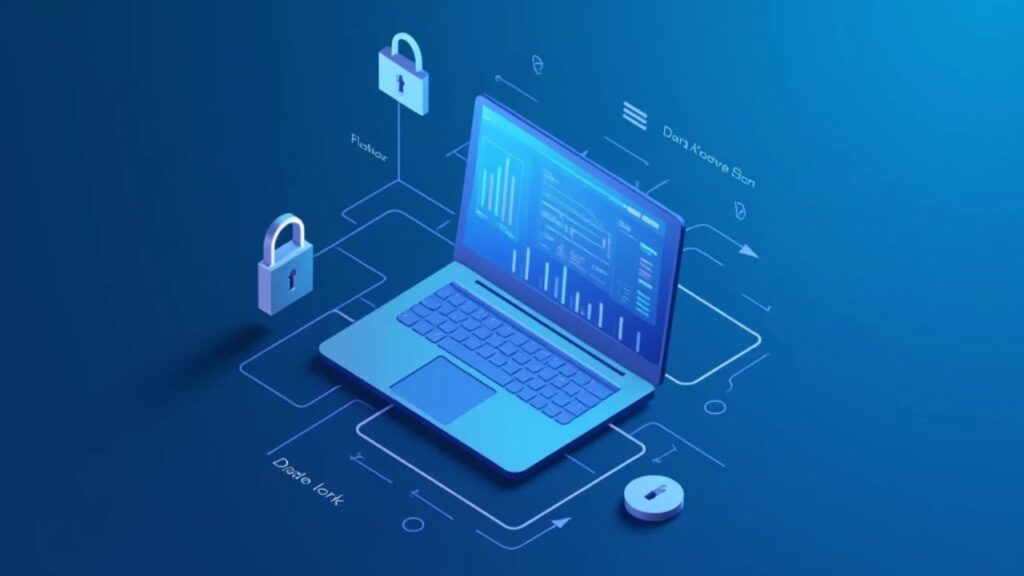What is Identity and Access Management?
Identity and Access Management (IAM) is a crucial framework for ensuring that the right individuals access the right resources at the right time for the right reasons. With the increasing reliance on digital systems, managing user identities and their associated access rights has become essential for organizations looking to protect sensitive information and maintain robust security protocols. At its core, it encompasses a multitude of processes and technologies designed to manage user identities, authenticate users, authorize access, and oversee the entire lifecycle of user accounts.
The fundamental components of IAM systems include user authentication, which verifies the identity of users attempting to access resources; authorization, which determines what users are allowed to do within those resources; and lifecycle management, which oversees the ongoing process of creating, managing, and deleting user accounts. These elements work in conjunction to create a secure environment that acts against unauthorized access while allowing legitimate users to perform their tasks efficiently.
The evolution of IAM has kept pace with advances in technology and changing business requirements. Historically, it was a response to the need for enhanced access security, but it has matured into a sophisticated framework. Modern IAM systems now utilize advanced methods such as multi-factor authentication, Single Sign-On (SSO), and Role-Based Access Control (RBAC) to ensure robust security measures. This evolution underscores the importance of IAM as a critical element in contemporary cybersecurity strategies, helping organizations mitigate risk and comply with regulatory requirements. As threats continue to evolve, IAM remains a cornerstone for protecting sensitive data and effectively managing user privileges, thereby improving overall organizational security.

Key Benefits of Implementing IAM
Identity and Access Management solutions offer numerous advantages to organizations seeking to enhance their security measures and operational efficiency. One of the primary benefits is the improved security posture achieved through centralized management of user identities. By consolidating identity control, organizations can reduce the risks associated with unauthorized access and identity theft. A centralized IAM solution allows for the implementation of stringent security policies across the board, ensuring that only authorized personnel can access sensitive information and systems.
Additionally, IAM contributes to an enhanced user experience through features like Single Sign-On (SSO). With SSO capabilities, users can access multiple applications and systems with one set of credentials, significantly improving their overall experience. This not only streamlines the login process but also reduces the burden of password management, allowing users to focus on their tasks without the constant interruption of multiple logins. Companies that have adopted SSO have reported higher productivity levels and increased user satisfaction.
Regulatory compliance is another critical aspect that IAM solutions address. Organizations are often required to adhere to various regulations and industry standards, such as GDPR and HIPAA. A robust system like this facilitates compliance by ensuring that access to sensitive data is well-governed and auditable. This aspect is particularly beneficial in industries where data protection is paramount.
Moreover, effective IAM streamlines access management processes. By automating role-based access control (RBAC), organizations can minimize manual interventions and reduce human errors. For example, financial institutions have leveraged IAM to simplify user provisioning and de-provisioning processes, thereby enhancing accuracy and accelerating response times in access management.
In conclusion, implementing an IAM solution not only strengthens an organization’s security framework but also improves user experience and operational efficiency while ensuring compliance with regulatory obligations.
Challenges in Identity and Access Management
Organizations today face numerous challenges in implementing and maintaining effective Identity and Access Management systems. One of the primary obstacles is the integration with legacy systems. Many organizations have existing IT frameworks that were not designed with modern IAM principles in mind. This disconnect can create significant hurdles, as organizations must find ways to bridge the gap between outdated technology and current access management best practices.
User adoption poses another critical challenge. Employees may resist changes to familiar authentication processes, which can lead to low compliance rates or poor security practices. Organizations need to implement comprehensive user training programs that highlight the benefits of IAM, along with user-friendly interfaces that encourage adoption and usage.
Maintaining data privacy is also paramount to IAM strategies. With increasing regulatory scrutiny around data protection, organizations must ensure that their systems not only grant access but also enforce strict privacy controls. This becomes particularly complex when managing identities across multiple environments, such as on-premises data centers and cloud services. Organizations must develop robust policies that govern access across these platforms, while ensuring compliance with relevant regulations.
The threat of identity theft is an ever-present risk associated with IAM. As cyberattacks become more sophisticated, organizations must stay vigilant against potential vulnerabilities. Cybercriminals increasingly target IAM systems to gain unauthorized access to sensitive information. Consequently, it is essential for organizations to regularly assess their IAM frameworks for security weaknesses and implement advanced authentication methods, such as multi-factor authentication, to mitigate these risks.
Finally, organizations can employ various strategies to overcome these challenges, including investment in modern IAM solutions that offer seamless integration capabilities, user-friendly interfaces, and robust security features. With a proactive approach towards addressing these hurdles, organizations can enhance their identity and access management posture, ultimately safeguarding their assets and user data.

Future Trends in IAM
As organizations continue to navigate the complexities of the digital landscape, it is imperative to understand the future trends in Identity and Access Management. Emerging technologies, particularly artificial intelligence (AI) and machine learning (ML), are poised to revolutionize identity security. These technologies can enhance threat detection, automate administrative tasks, and provide more accurate risk assessments by analyzing user behavior patterns. Consequently, integrating AI and ML into IAM strategies will enable organizations to bolster their defense mechanisms against increasingly sophisticated cyber threats.
Another significant trend is the rise of biometrics in user authentication. The use of biometric data, such as fingerprints, facial recognition, and iris scans, is gaining traction as organizations seek more secure means of verifying user identities. Biometrics not only streamline the login process but also offer a higher level of security, as these identifiers are unique and difficult to replicate. As such, businesses will likely adopt biometric solutions to facilitate smoother user experiences while also enhancing their security posture.
Decentralized identity management solutions are emerging as a key player in the IAM landscape. By giving individuals greater control over their personal information and using blockchain technology for authentication, these solutions can mitigate the risks associated with traditional centralized systems. Organizations adopting decentralized identity approaches will benefit from improved data privacy, reduced identity theft, and increased user trust.
The growing importance of Zero Trust security models cannot be overlooked. Zero Trust challenges the notion of a trusted network perimeter, mandating that verification be required for every user and device, regardless of location. This model aligns well with IAM strategies as it emphasizes continuous authentication and strict access controls. To remain competitive and secure, organizations must consider these trends and proactively integrate innovative IAM solutions that align with evolving security needs.
Conclusion
Identity and Access Management is a cornerstone of modern cybersecurity, enabling organizations to securely manage user identities and access rights in an increasingly complex digital environment. By centralizing control, enhancing user experience through features like Single Sign-On, and ensuring regulatory compliance, IAM systems contribute significantly to operational efficiency and data protection.
Despite challenges such as integrating legacy systems, ensuring user adoption, and combating sophisticated cyber threats, IAM continues to evolve with advancements like AI-driven threat detection, biometric authentication, and decentralized identity solutions. These innovations, coupled with Zero Trust security models, are shaping the future of IAM, ensuring that organizations can safeguard their resources and adapt to emerging security demands.
As businesses navigate the digital landscape, embracing robust IAM frameworks is essential for fostering trust, enhancing security, and maintaining a competitive edge.
FAQ: Identity and Access Management
What is Identity and Access Management (IAM)?
It is a framework of policies, processes, and technologies designed to ensure that the right individuals access the right resources, at the right time, and for the right reasons.
Why is IAM important?
Increases security by managing access to sensitive information, improves operational efficiency, and ensures compliance with regulations such as GDPR and HIPAA.
What are the main components?
The core components include authentication (verifying user identity), authorization (defining user permissions), and lifecycle management (managing user accounts from creation to deactivation).
What are the benefits for companies?
IAM improves security, streamlines user access through features like Single Sign-On (SSO), supports regulatory compliance, and reduces operational inefficiencies.
What are common challenges in implementing IAM?
Challenges include integrating with legacy systems, ensuring user adoption, maintaining data privacy, and preventing identity theft.
How does Single Sign-On (SSO) enhance user experience?
SSO allows users to access multiple systems with a single set of credentials, reducing password fatigue and improving productivity.
What role do advanced technologies like AI and biometrics play in IAM?
AI improves threat detection and risk assessment, while biometrics, such as fingerprint and facial recognition, enhance authentication security and convenience.
What is the Zero Trust model, and how does it relate to IAM?
The Zero Trust model requires verification for every user and device, emphasizing strict access controls and continuous authentication to align with IAM strategies.
What is decentralized identity, and why is it gaining popularity?
Decentralized identity gives users control over their data and uses blockchain technology for secure authentication, reducing risks associated with centralized systems.
How can businesses stay ahead in IAM practices?
By adopting modern IAM solutions, integrating emerging technologies like AI and biometrics, and following best practices such as multi-factor authentication and Zero Trust principles, businesses can ensure robust identity and access management.
More about Identity and Access Management (IAM)



